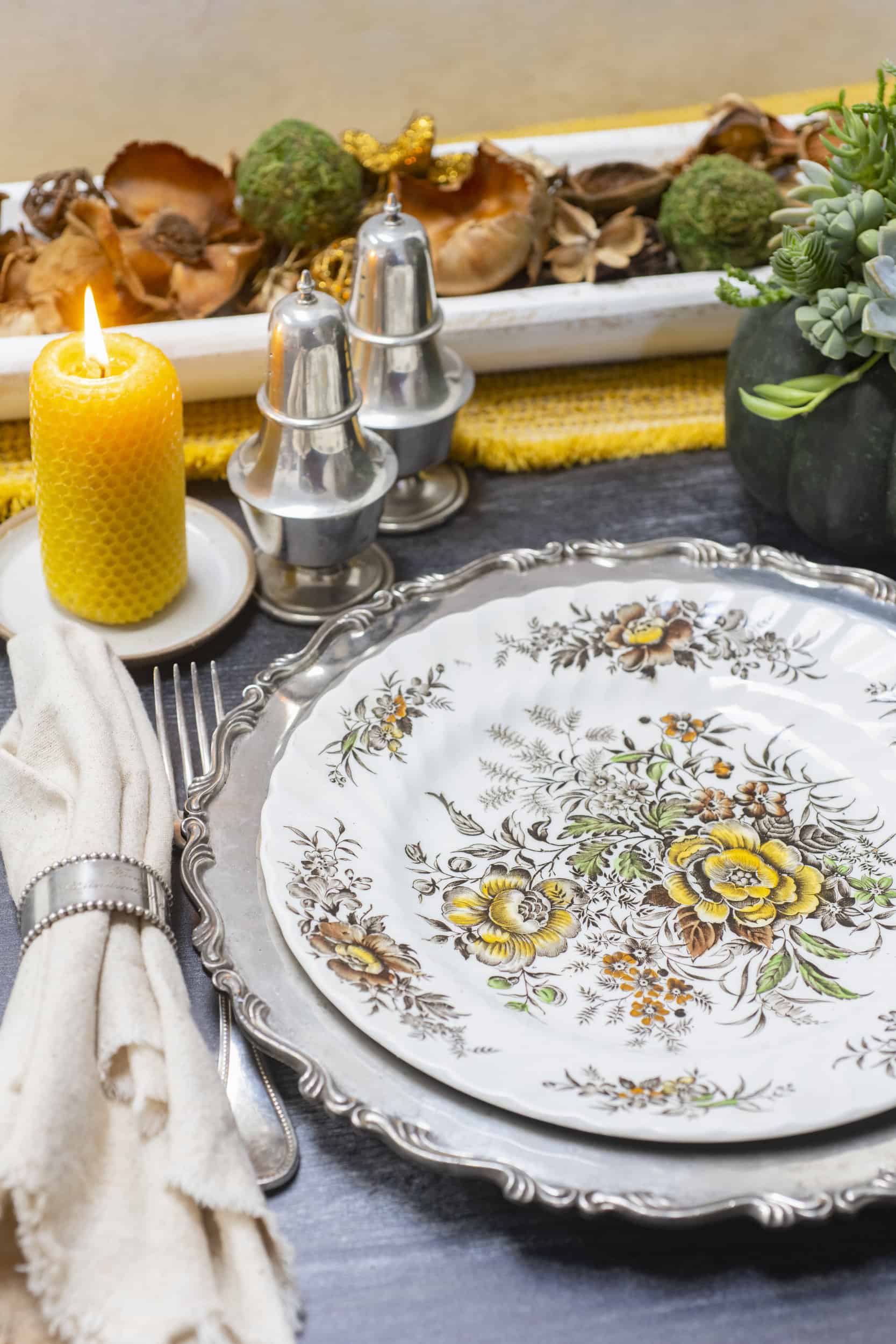Written and Photographed by Paulette Phlipot
—
Can the dinnerware on a holiday table be equally important as the food? Without a doubt!
Choosing your serving vessel is as much of an art as selecting and making the food. From pumpkin-colored and shaped bowls, to sparkling red plates adorned with holly leaves and snowflakes—the storefront options become more expansive every year. Still, family heirlooms, made from silver, copper, and stainless steel, give that same festive vibe, while also honoring age-old tradition.
My love of cooking and entertaining naturally led me to develop an appreciation for family cookware and tableware. My mother-in-law holds the same sentiment and helped me build my collection by gifting me heirlooms throughout the years. Each item she gifts is always carefully wrapped and comes complete with a small note telling me who owned it and how each family used the special piece or collection. She always urges me to use the items—not to just store them away—so I’ve honored this request, bringing little pieces of history to our family’s table.
We’ve incorporated these treasures into our weekly routine (they’re not just for special occasions), making me realize the importance of proper care, as well as understanding the unique properties and benefits of each metal. Knowing the makeup of these vessels got me wondering about their health and safety, too, and led me to appreciate the importance of choosing the right type of metal for the correct purpose.
Sterling Silver
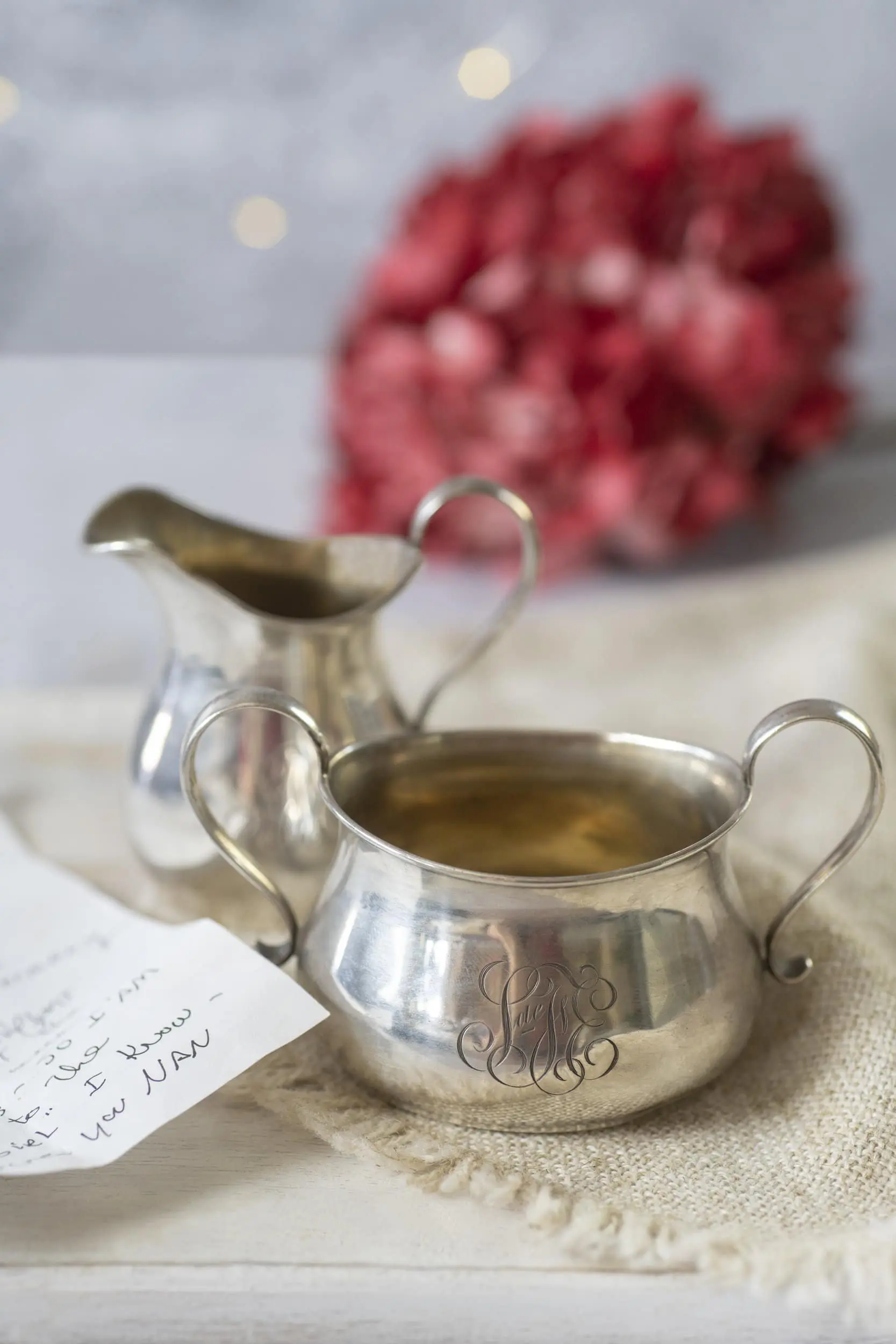
Heirloom tableware passed down through generations—or scored via secondhand shopping—almost always includes sterling silver. Whether tarnished with a matte finish, or polished to a high shine, silver looks stunning on any dinner table. It’s strong and durable, and with regular care and cleaning, it can last for generations, making silver a wise choice for families to hand down. The most common way to bring sterling silver to a table is through the silverware. This instantly gives your spread a sophisticated, elevated look.
Sterling is also beneficial to eat from due to its antibacterial properties. Before the days of modern refrigeration, sailors used to throw silver coins into milk to keep it from spoiling on long journeys. In the 14th century, European households used silver utensils to eat their meals. And by the 17th century, “silverware” had become a status symbol, with elaborate sets of utensils and serving pieces reserved for the wealthy and noble.
Silver has oligodynamic properties (its metal ions inhibit the growth of microorganisms), too, combatting mold, viruses, and fungi, and making it a very hygienic choice.
Despite its benefits, silver can create a chemical reaction when it contacts highly acidic foods. This causes both a discoloration of the silver and a metallic flavor in the food. So, while you may not want to serve citrus fruit or tomatoes in silver bowls, there are plenty of other options to choose.
Copper
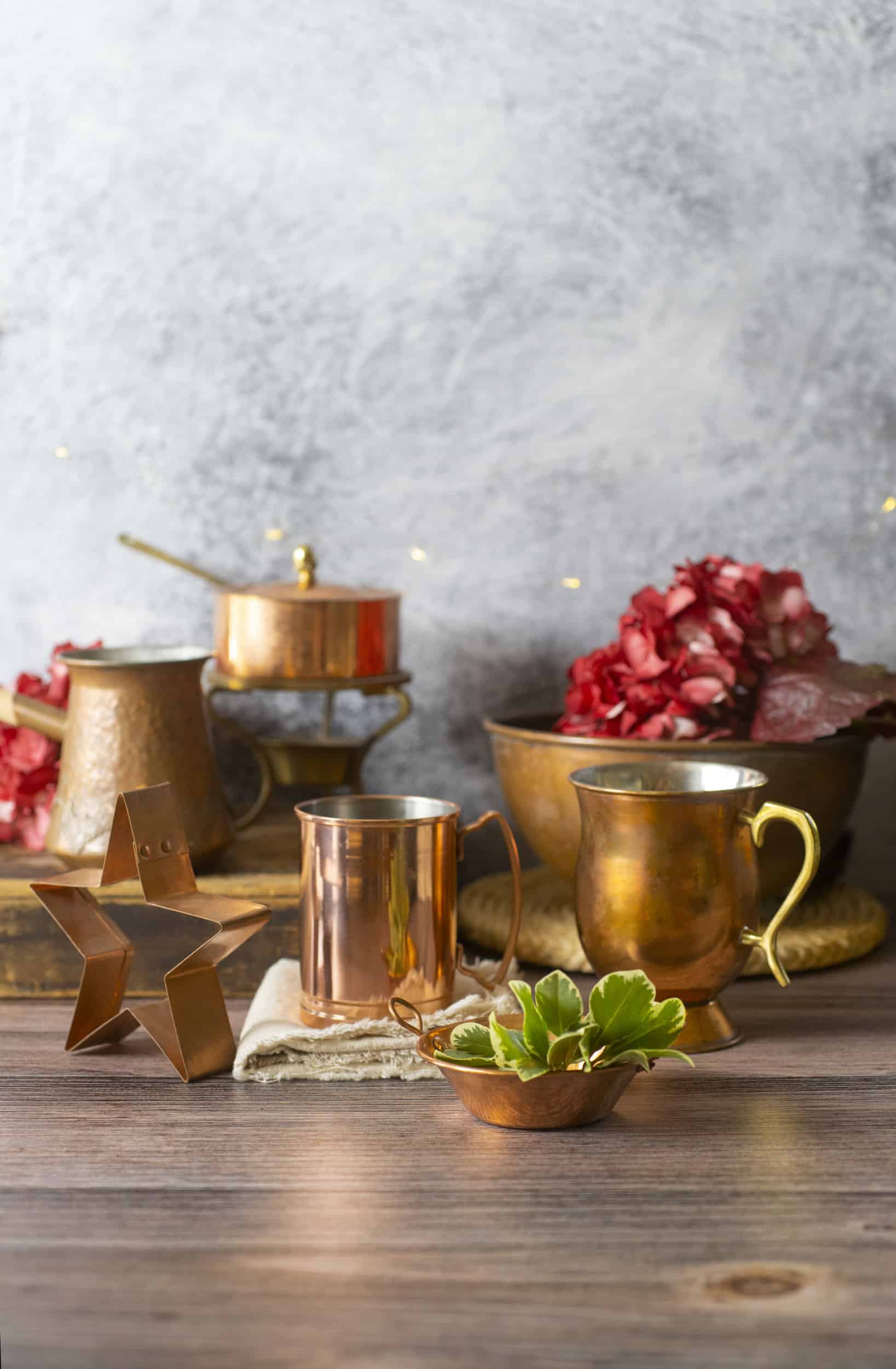
Copper cookware and tableware is worthy of collecting. First discovered more than 10,000 years ago, copper served its purpose throughout history. In the 18th century, copper was used for making tea kettles and other decorative items for the home. But it was not until the 19th century that copper first appeared on tables.
Today, with the rise in popularity of Ayurvedic medicine (and the creation of the Moscow Mule cocktail), copper has found its way into modern homes. Cooper, as a nutrient, is needed by the body and can strengthen the immune system and assist with the development of healthy new cells. With its antibacterial properties, as well, it’s not surprising that humans have been drinking water from copper cups for thousands of years. Copper adds a unique flavor to food, and it’s durable and able to withstand high temperatures. Still, it’s important to choose recipes that are safe to cook in copper pots and to only use high-quality, lined copper cookware that is free of scratches and dents. Copper can be toxic in high doses, so it is important you don’t overdo your intake.
Pewter
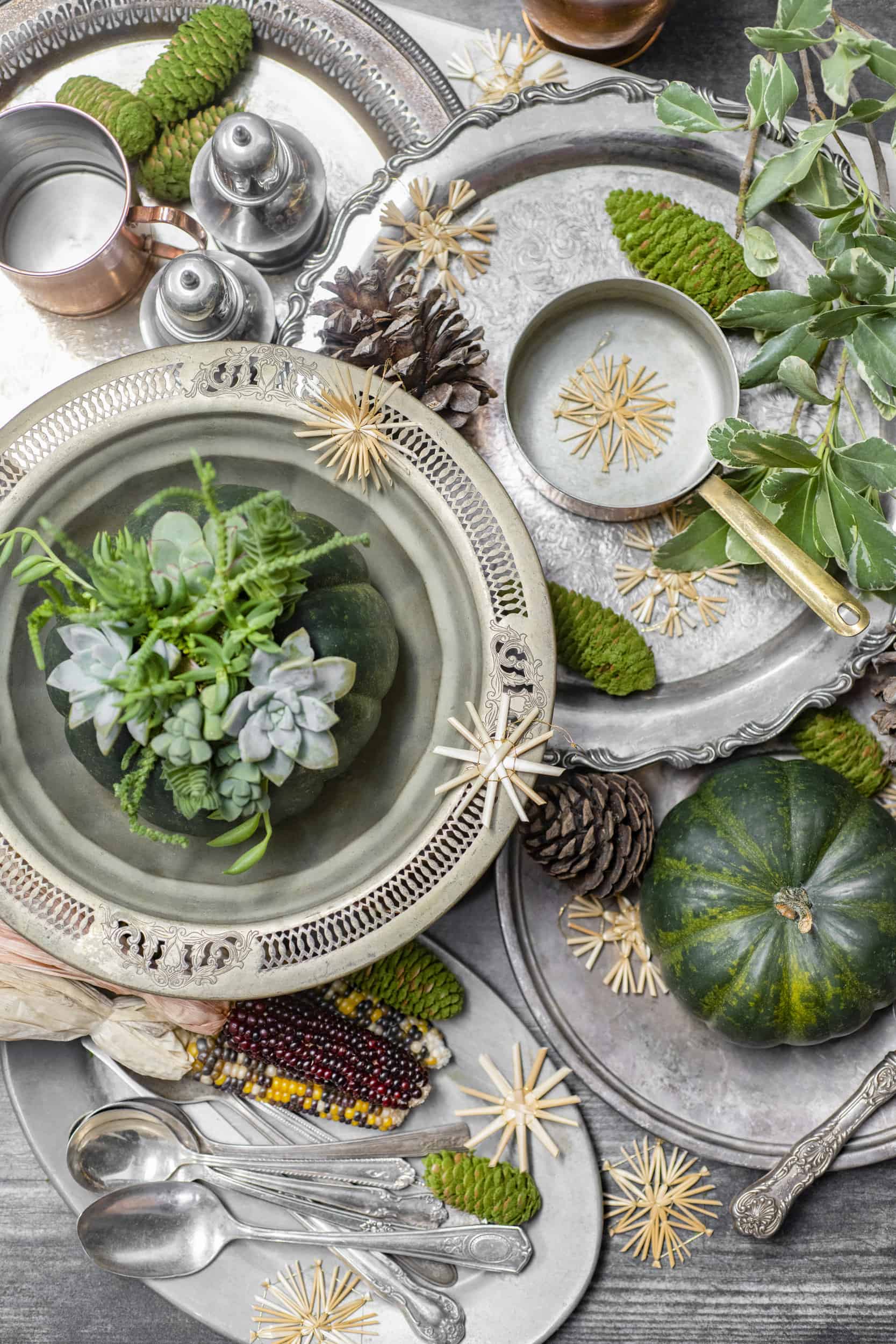
For centuries, pewter was also considered a tableware status symbol. This timeless and valuable material is less costly than metal or silver and was used in 18th-century America to make plates, pitchers, and flatware. Pewter retains heat well, keeps things cold with its insulating properties, and is easy to clean and maintain, making it a practical choice for everyday use. However, this metal has a low melting point and dents easily, so it’s estimated that the pewter pieces used in Colonial American homes only lasted about ten years. Resourcefully, pewtersmiths would collect damaged pewter items and trade them for new ones (at the rate of one pound of new pewterware for three pounds of damaged goods), and then recast them into new vessels. (How’s that for upcycling?)
Whether you prefer vintage pewter or a more modern version, this metal adds a touch of elegance and charm to your table. Start your meal with a salad served on pewter plates to make a statement and to also keep your veggies nice and cold. Enjoy warm, spiced mulled wine in a pewter mug as a classic way to bring this material into your celebration. And a chocolate cake looks stunning on a pewter cake stand.
Iron
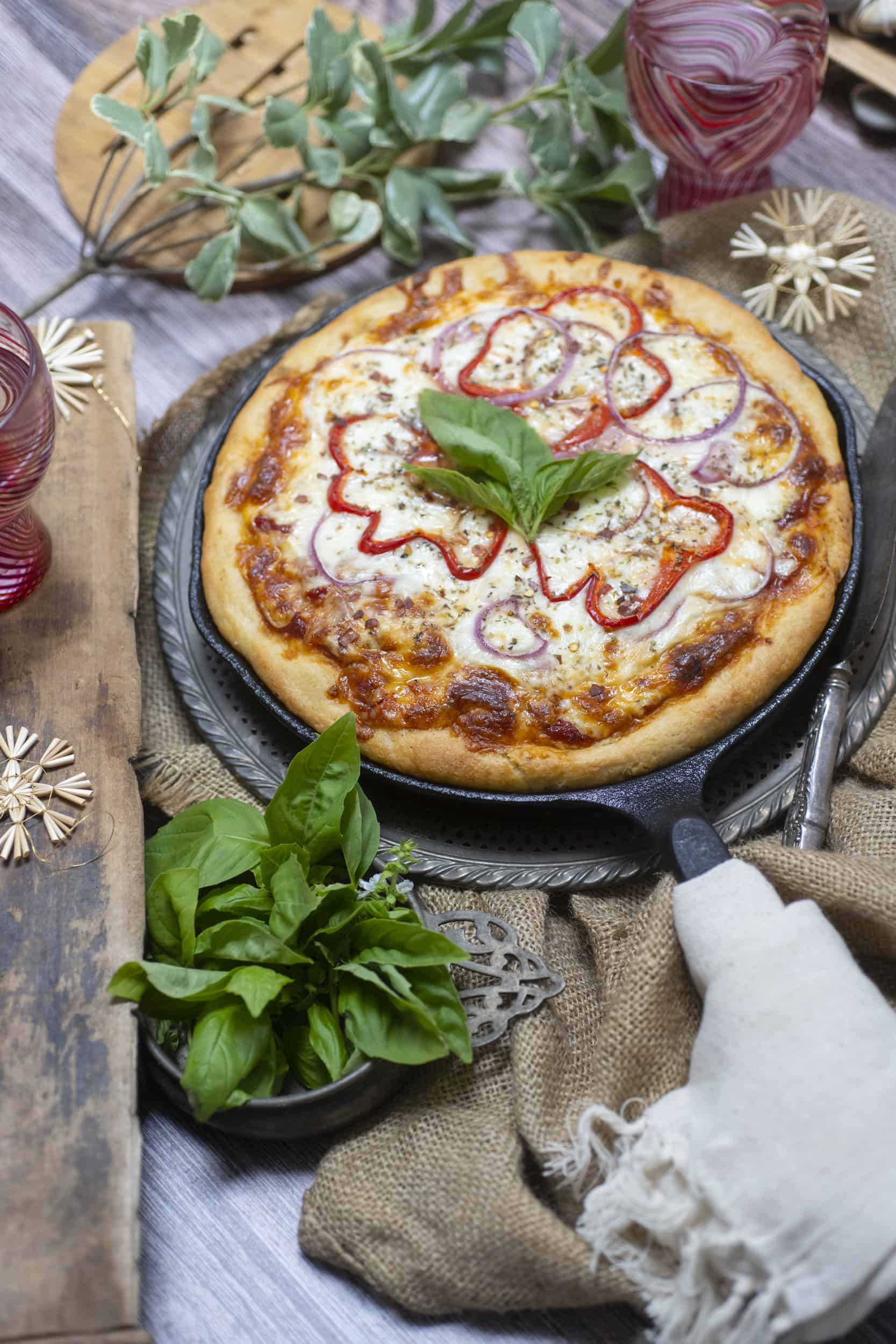
Iron cookware—used for centuries—may not be as elegant as other materials, yet it’s still considered a kitchen staple. Iron’s excellent heat retention and distribution properties make it ideal for slow-cooking stews, soups, and meats. Cornbread served in a cast-iron skillet brings a rustic look to your table setting. Or, for a casual dinner, a large cast-iron pan can be used to create a simple deep-dish pizza.
Although quite heavy, when cared for properly, cast iron cookware can be passed on from generation to generation and used in an enormous number of ways. These pieces should not be hard to find in a secondhand store, either.
When you eat food cooked in cast-iron, you absorb iron, which is an essential mineral that helps with the production of red blood cells, especially for those who are anemic. Because of this, the regular use of cast iron can be beneficial for some, but not for everyone. And be mindful not to cook acidic or alkaline foods in iron vessels, as the metal can leach into the food, altering the taste and potentially causing health concerns.
Stainless Steel
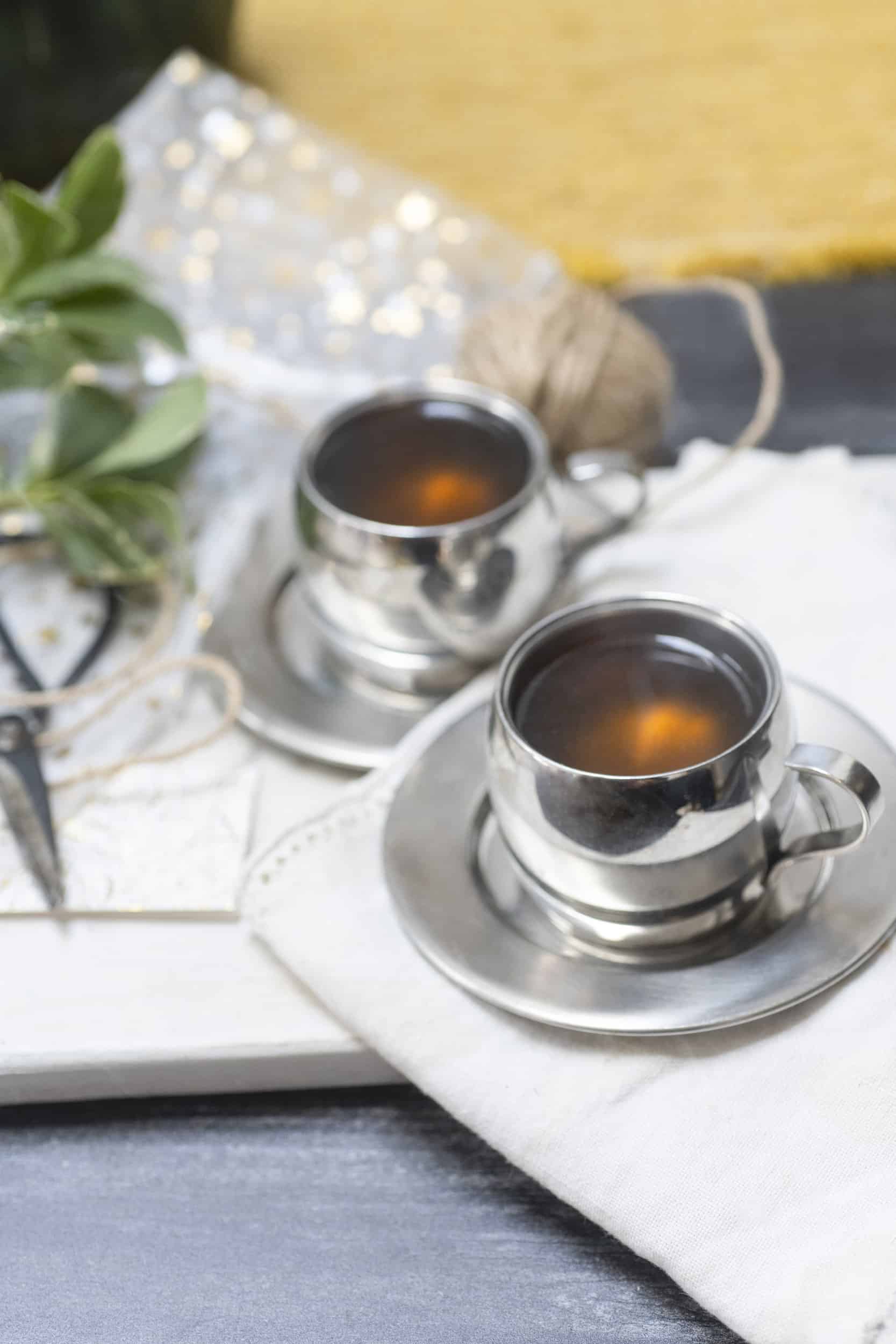
It’s impossible to consider a holiday table free of stainless steel, and its use has grown widely since the 1920s. Stainless steel gained momentum in the kitchen after World War II with the rise of mass production and the affordability of metal, making it readily available to the average household.
Well known as a vessel for food storage, stainless steel does not alter food’s flavors or leach harmful chemicals into food. That’s why it’s used as an eco-friendly option for water bottles and kids’ lunch containers. Being non-reactive and easy to clean also makes stainless an excellent candidate for cutlery and other food preparation utensils. Warm dishes, like vegetable curry and lentil soup, stay warmer longer when served in stainless bowls. And for a modern tablescape, just add stainless steel tumblers or wine glasses to create a sleek look and feel.
Honoring family traditions and history can be as simple as adding a few heirloom serving dishes or platters to your meal. Whether handed down or picked up at a sale, incorporating bequest tableware into contemporary spreads instills tradition and nostalgia into any celebration. Like with any special meal, it’s important to create a space where you and your loved ones come together to slow down and create memories. And while doing so, why not find a way to honor and embrace history and remember how our grandmothers served their food?
Where to Find Heirloom Tablewear
Jackson
• Belle Cose, bellecose.com, 307-733-2640
• Mountain Dandy, madejacksonhole.com/pages/mountain-dandy, 307-690-2896
Teton Valley
• Festive Living, festive-living.com, 208-787-3378
• The Wardrobe Company, 208-354-2234
*Also, hit up secondhand stores, estate sales, and yard sales in the summer!
